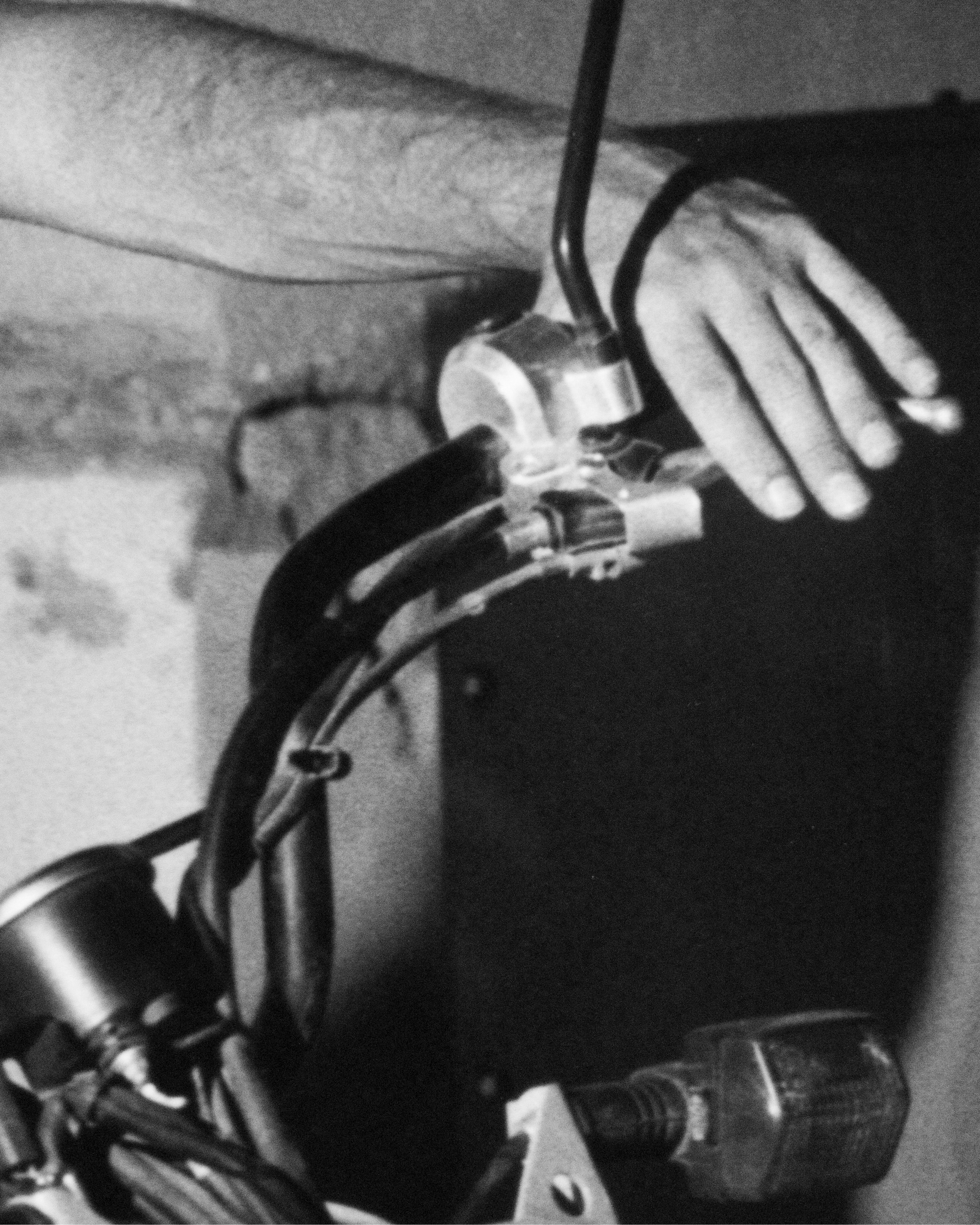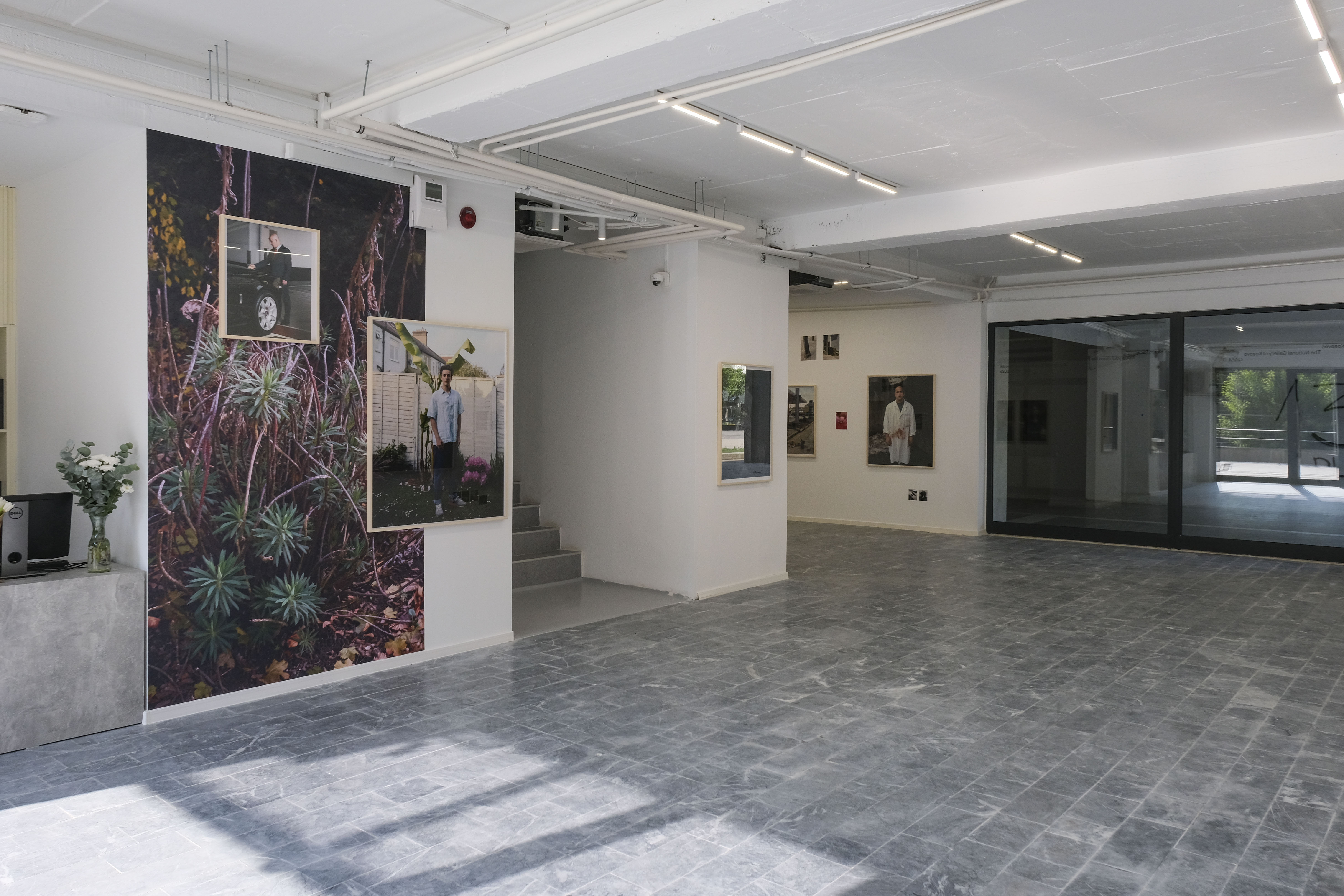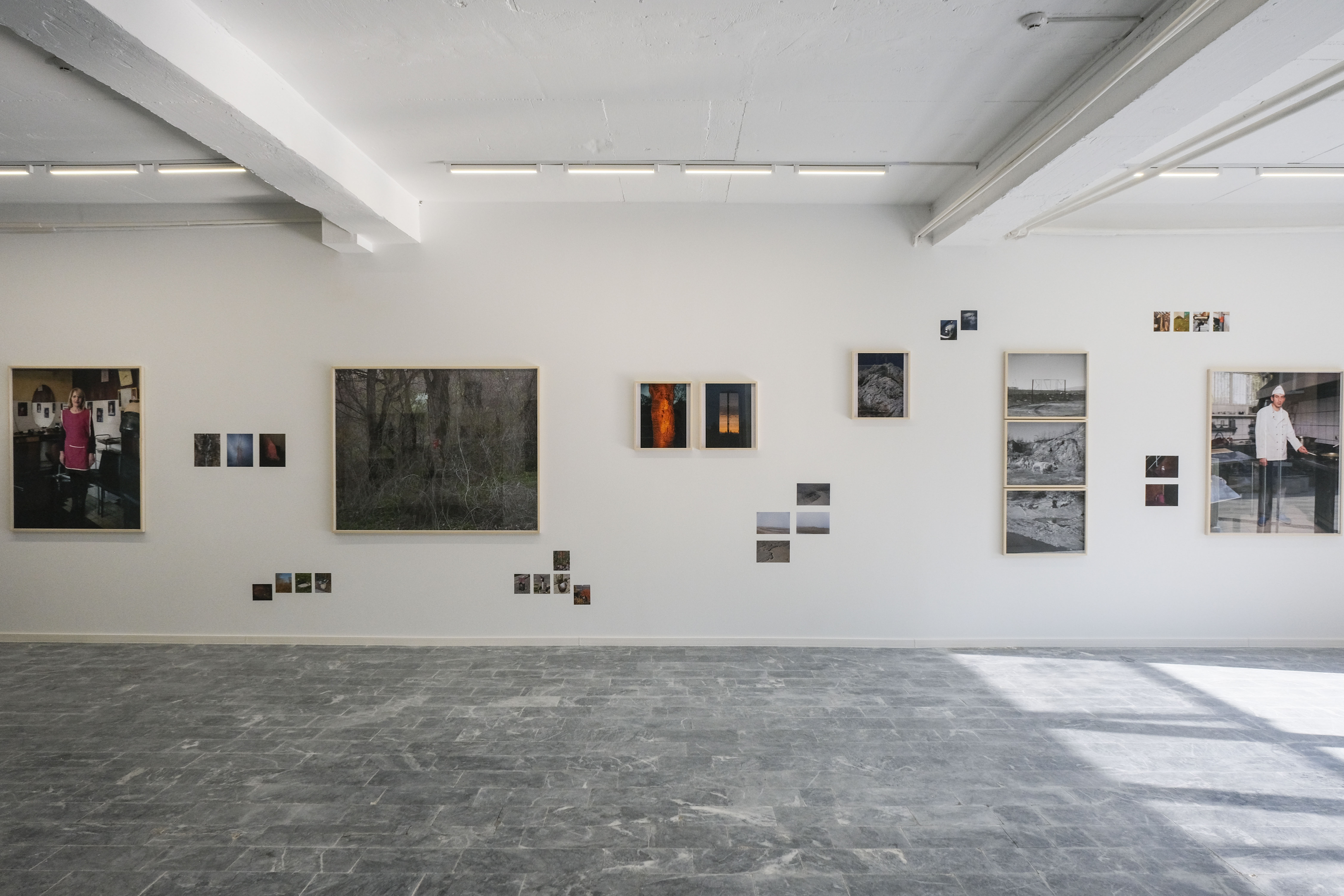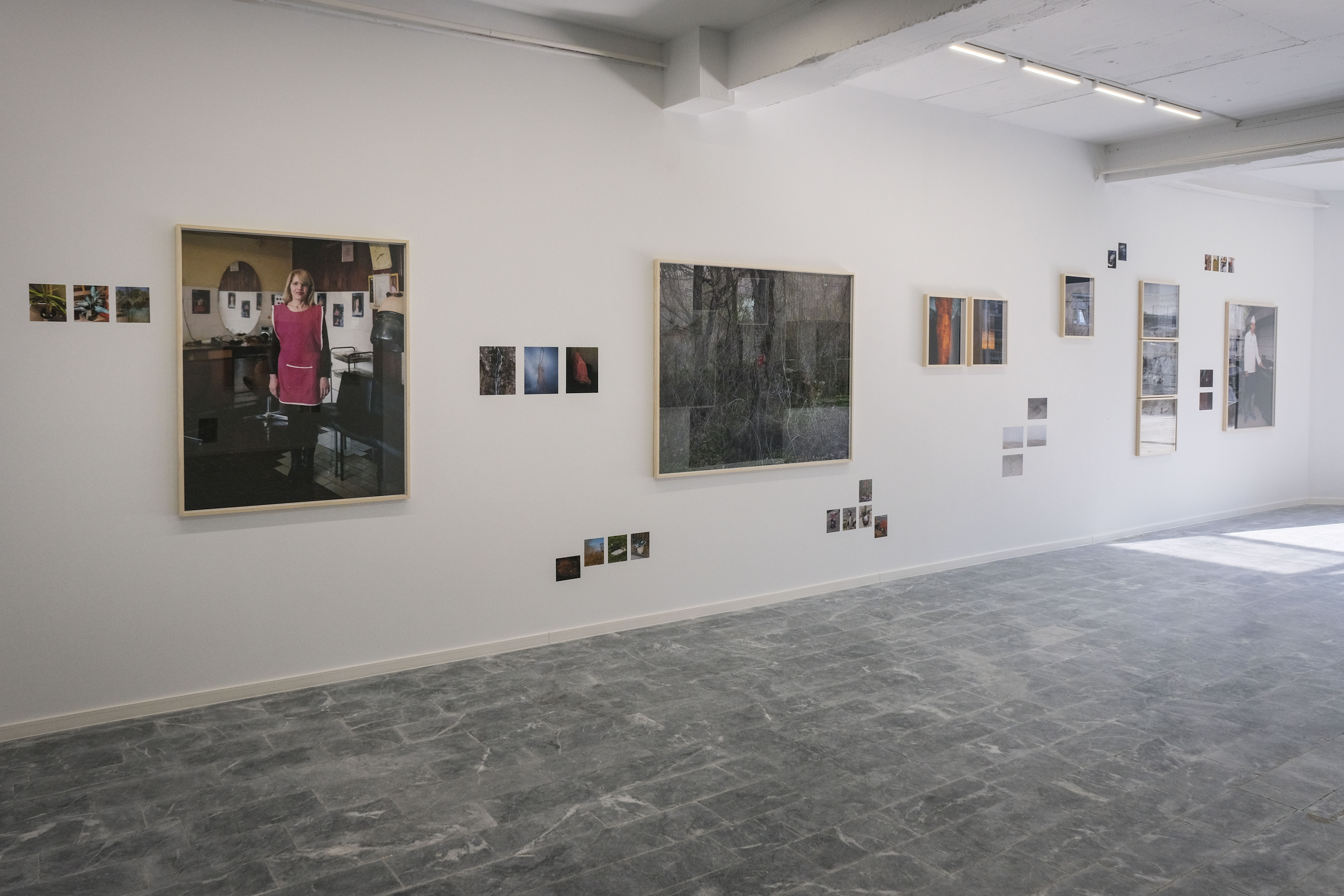To feel your mood like the weather
Over the past two decades, Blerim Racaj’s photographic practice has unfolded into a chronicle of shifting and reassembling itself into forms that defy containment. What in his early work seemed to echo the language of portraiture now leans more towards something sculptural, or even architectural. In these images, form doesn’t just frame reality, it deepens it, and at times dissolves it altogether.
Much of the exhibition draws on five key projects: Kosovars, Indecisive Moment, Ephemeral Notes, Vend, and Rruga B. In the series Kosovars, begun in 2005, Racaj turns his focus on shifting cultural topography of post-war Kosovo. These images avoid romanticism and overt editorializing, instead offering a visual register of societal transformation. Similarly contemplative, Indecisive Moment focuses on the uncertainty of Kosovar youth, as they stand at the threshold of adulthood. Rendered in stark black and white, the work captures fleeting, intimate instants charged with vulnerability. Ephemeral Notes continues this exploration, using landscape as a rhetorical device to initiate a subjective conversation between present and past. Here, the land itself becomes a record of emotion and memory. Questions of belonging: to whom? to where? to what history? are central to Vend, named for the Albanian word for “place” or “home”. In this work, Racaj traces the contours of identity across generations of Kosovar diaspora in London. The resulting images hum with tension and tenderness, capturing not just the subjects and their surroundings, but the atmospheres of longing that surround them. He is particularly attuned to how the UK, Kosovo, and the liminal spaces in between are constructed and codified through visual culture. In contrast, Rruga B captures a booming neighborhood in Prishtina, lively with cafés, bars, fashion studios, and gyms. Rather than documenting architecture or design, Racaj focuses on the subtle interplay between people and their urban environment, and how daily life imprints itself on space and vice versa.
All these works are tied together by a series of images dispersed throughout the exhibition that the artist calls inbetweeners. They are photographs taken in London, on trips to Kosovo, visiting his brother in Antwerp, or while traveling for work to Spain. Unlike his more structured projects, these images were made almost unconsciously, and in many ways the opposite of his usual approach. They disrupt the rhythm of the exhibition just enough to remind us that not all meaning is made deliberately, and that some emerges in the periphery, in the pause, or in the passing glance.
His evolving toolkit reflects this sensibility. Over the years, Racaj has worked with everything from large-format and medium-format cameras to DSLRs, compact digital cameras, and more recently, his phone camera. Many of these in between images were captured on his phone, often in transit, in moments unburdened by preparation. In a way his evolving toolkit mirrors the constraints of modern life. Today, we are as much shaped by artistic impulse as by airline baggage limits. When you can’t carry the full arsenal of gear without being overcharged, the phone camera becomes not just a necessity, but an instrument of intuition.
What unifies all of Racaj’s work is a sculptural sensitivity, one that recalls artists like Thomas Demand and Jeff Wall. But where Demand builds meticulous models to be photographed, and Wall stages mythic, cinematic scenes, Racaj works with the qualities of the real, abstracting them just enough to open them to interpretation. Colors and forms are never just formal, they are symbolic, emotionally coded and often haunted.
As a London-based artist with roots in Kosovo, Racaj inhabits a liminal position, both insider and outsider. He brings this dual awareness to his work, where framing becomes subtle, deliberate and always attentive. The works in the exhibition do not offer a single narrative, but rather a series of visual propositions. His images linger in the present, asking us to look, and then to look again.
Curated by Bardhi Haliti
*The title of the exhibition To feel your mood like the weather is borrowed from the song Lift You by Moin (feat. Sophia Al-Maria)



